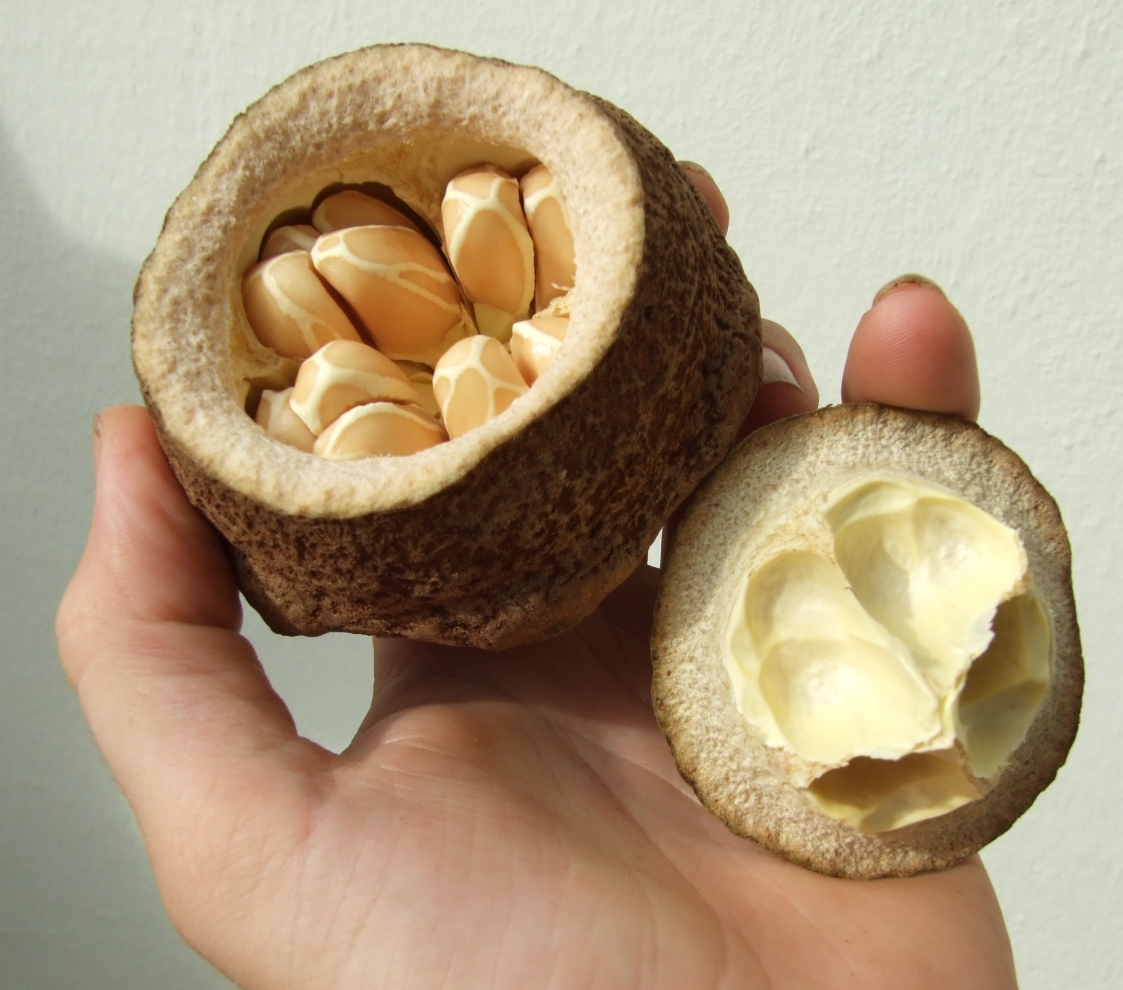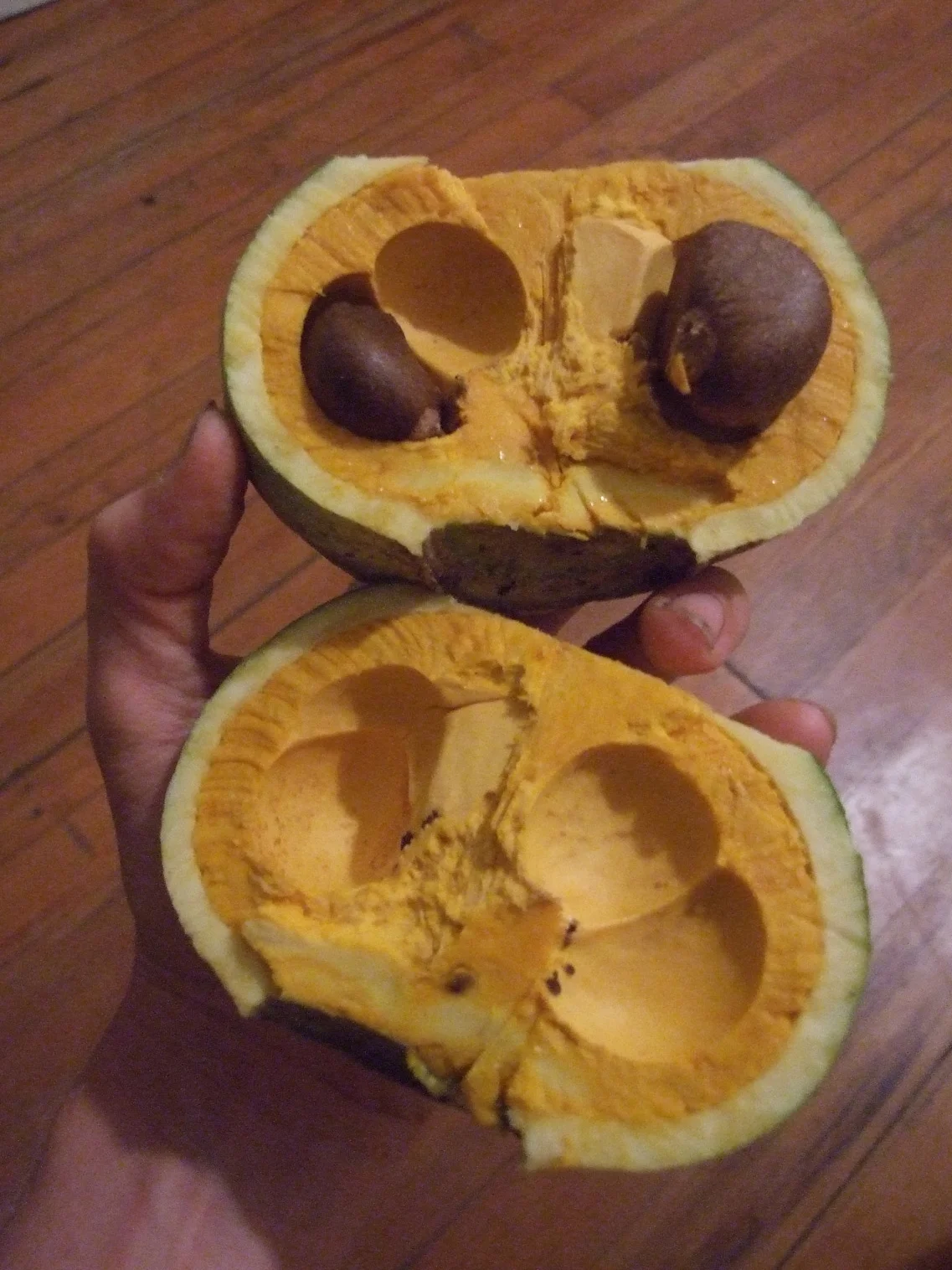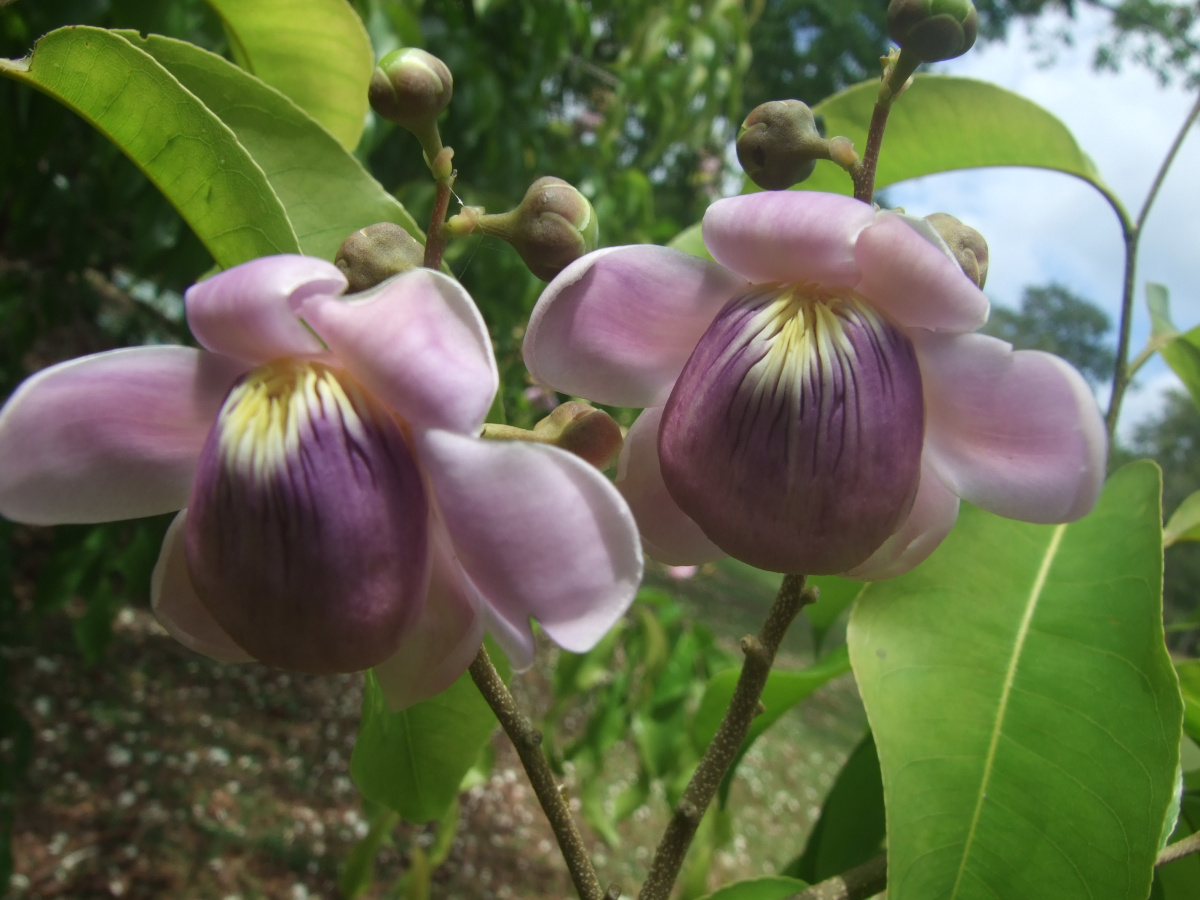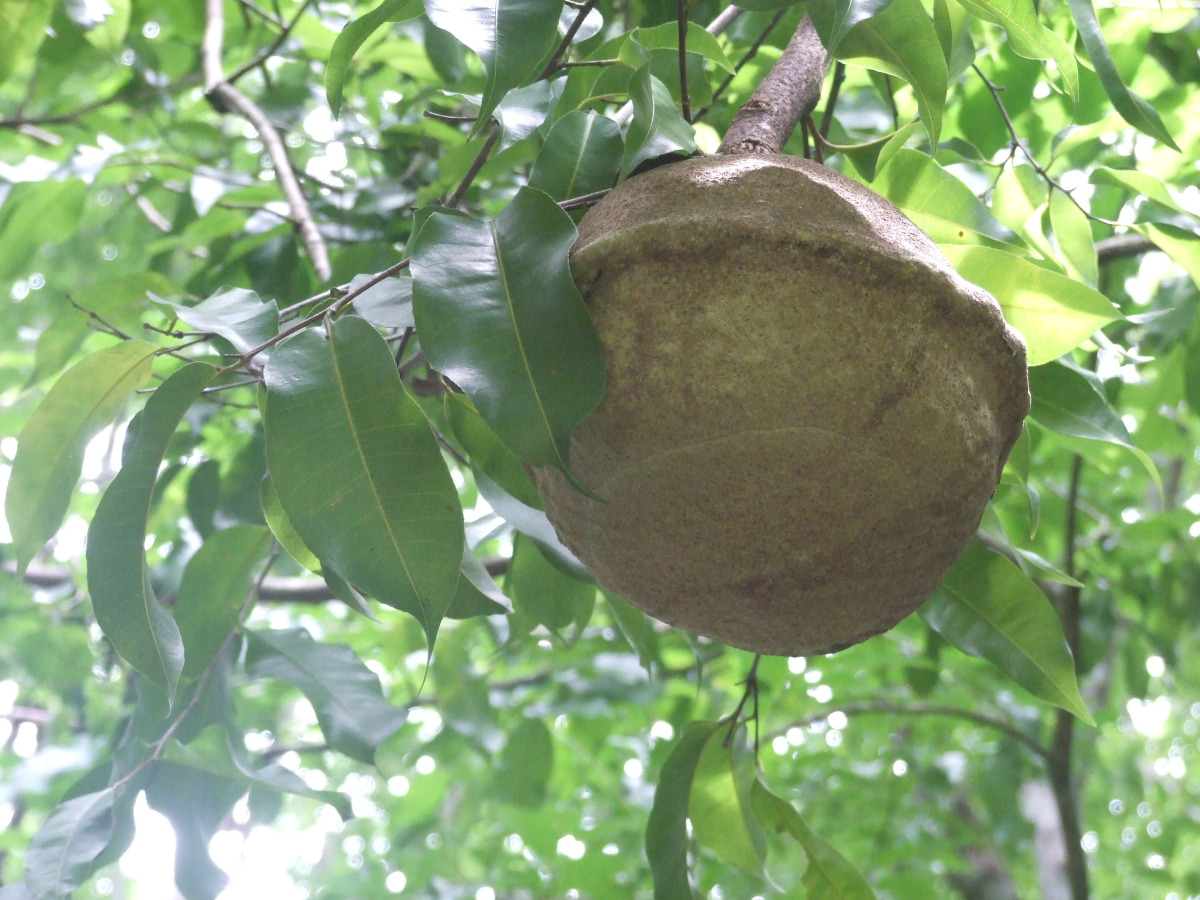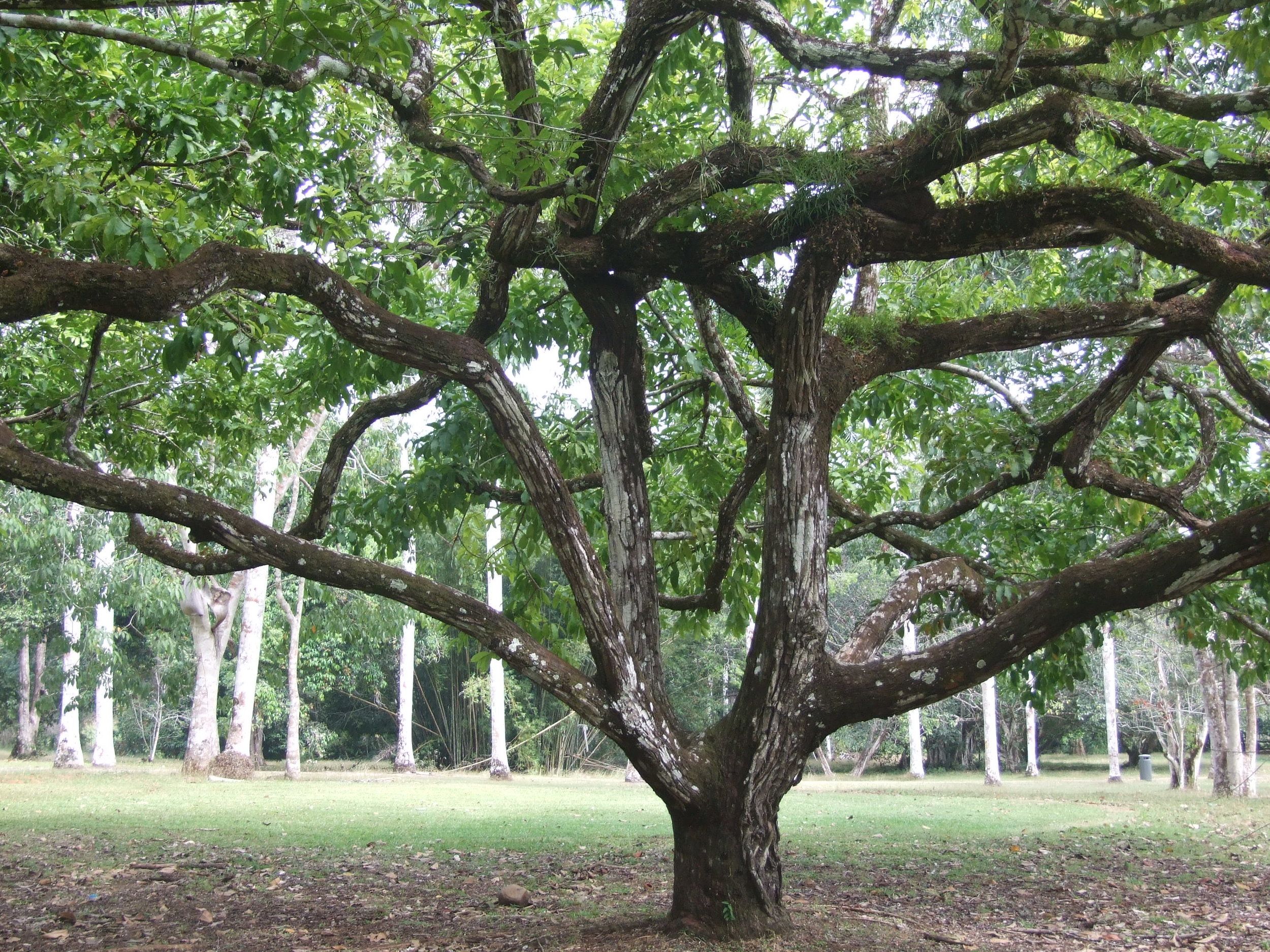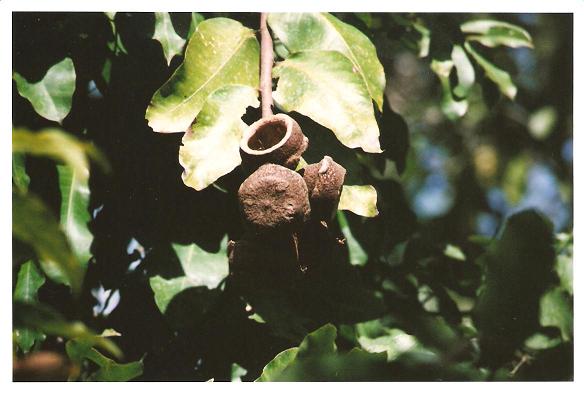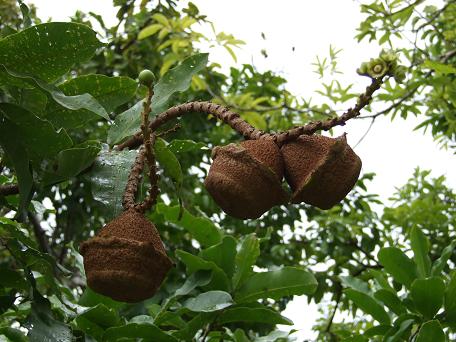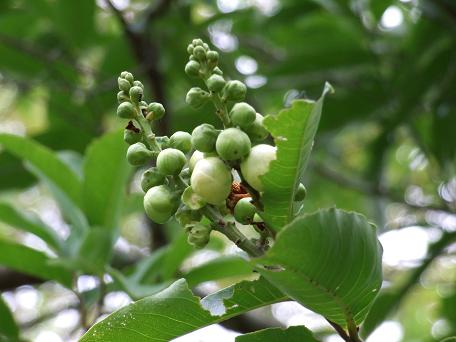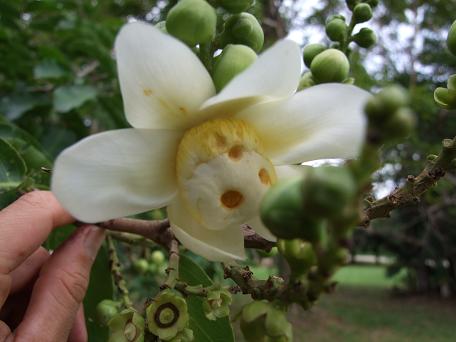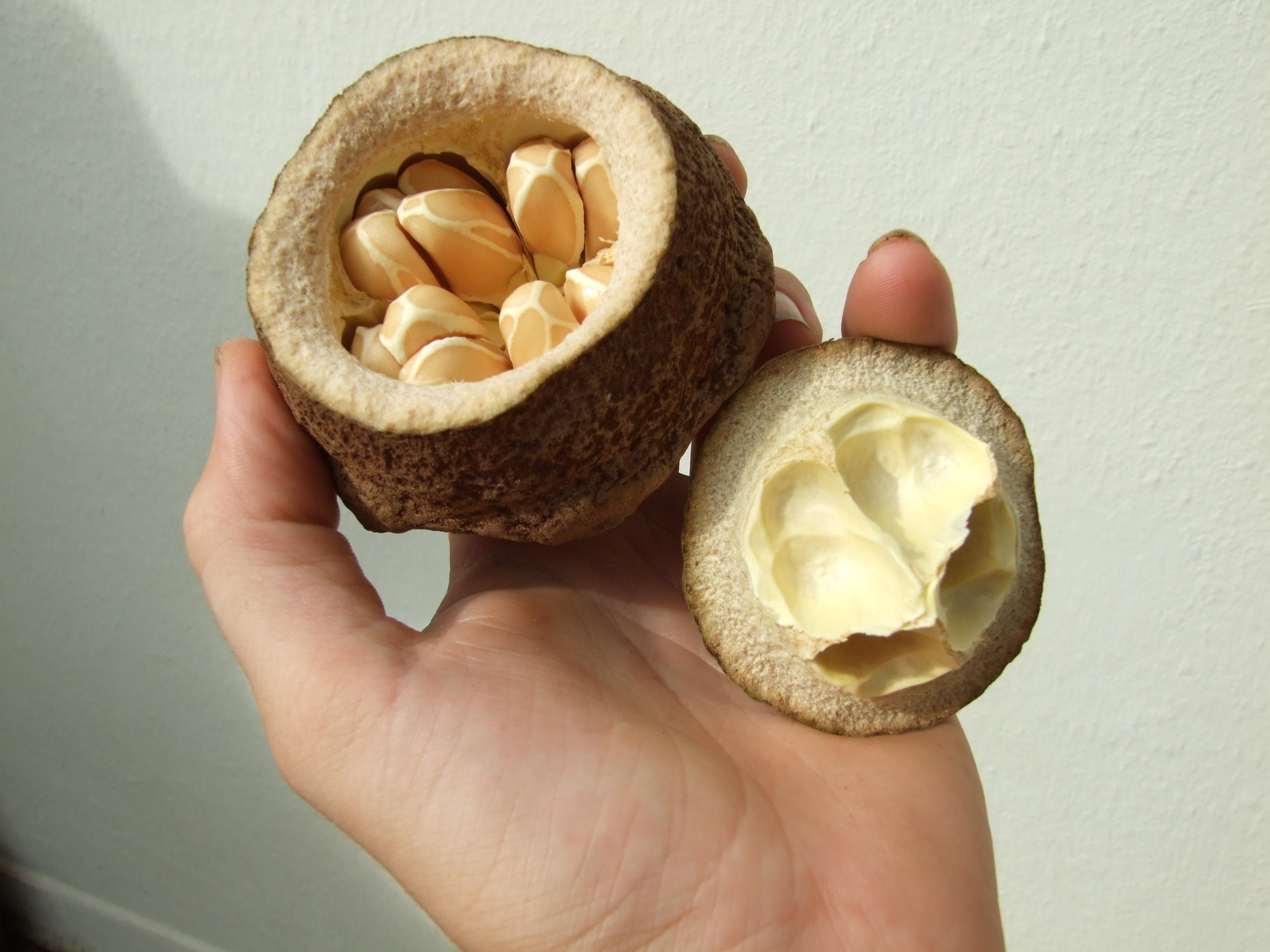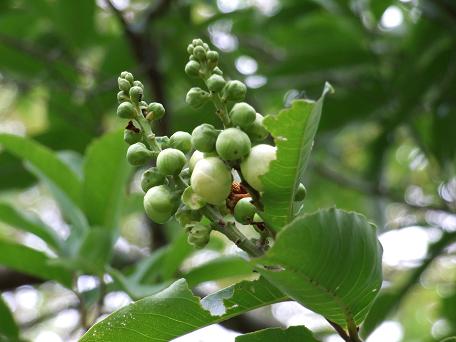This is a fantastic tree with much potential for further dissemination and integration into agroforestry and regenerative agricultural systems.
I first encountered the species growing in a stand of three trees in a somewhat neglected area on the edge of Summit botanic gardens outside of Panama City. I have collected seed from these trees for years. A cream colored aril is attached to the end of each nut, the aril tastes like anise but I’m not entirely sure if its edible. The nut itself is one of the best tasting tropical nuts I have eaten, identical in taste to its close relatives L. zabucajo and Brazil Nut (Bertholletia excelsa).
ORIGIN AND DISTRIBUTION
Ranges from the Maracaibo lowlands of Venezuela to the northern coast of Colombian where it ascends to the Magdalena and Cauca valleys. The species most often occurs in dry, open, somewhat disturbed habitats where it grows as a much branched tree, however it can also be found growing in moister forests, especially along waterways where it reaches heights of 25 m.
USES AND ETHNOBOTANY
The tree is primarily cultivated from seed for its nut, which can be eaten fresh or roasted. The seedpod and nut are like smaller versions of the closely related L. zabucajo. The nut has a superior flavor and a high oil content. In Brazil, an oil is extracted from the nuts to make soap.
PROPAGATION AND CULTIVATION
The tree is easily propagated from seed, although this species has never been systematically cultivated for commercial purposes. It is an underutilized crop that warrants further experimentation and research for incorporation into tropical agroforestry systems.


